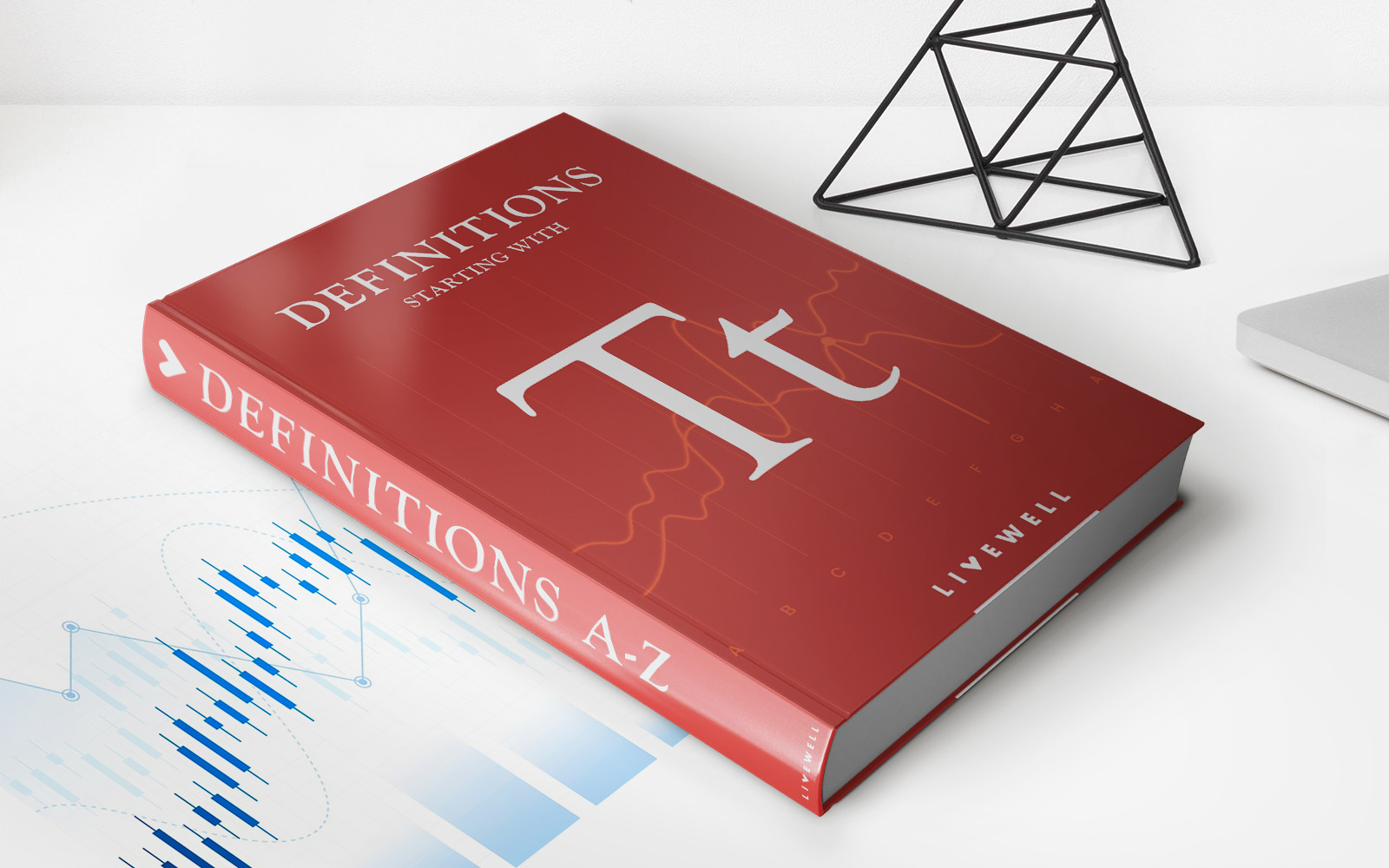

Finance
How Much Is UPS Pension
Published: November 27, 2023
Find out how much is UPS pension and manage your finances effectively. Get expert advice and tips on financial planning and retirement at Finance Hub.
(Many of the links in this article redirect to a specific reviewed product. Your purchase of these products through affiliate links helps to generate commission for LiveWell, at no extra cost. Learn more)
Table of Contents
- Introduction
- What is a UPS Pension?
- How does a UPS Pension work?
- How much will I receive from a UPS Pension?
- Factors that affect the amount of a UPS Pension
- How to Calculate the Value of a UPS Pension
- Options for Receiving a UPS Pension
- How to Apply for a UPS Pension
- Frequently Asked Questions about UPS Pensions
- Conclusion
Introduction
Welcome to our comprehensive guide on UPS pensions. In this article, we will provide you with all the information you need to know about UPS pensions, including how they work, how much you can expect to receive, and the factors that can affect the amount of your pension. Whether you are a current UPS employee or a retiree, understanding your pension benefits is crucial for planning your financial future.
UPS, short for United Parcel Service, is a global package delivery and supply chain management company. It is well-known for its brown delivery trucks and recognizable logo. As a UPS employee, you have the opportunity to participate in the company’s pension plan, which is designed to provide you with a secure source of income during your retirement years.
With the rising costs of living and the increasing uncertainty of social security benefits, having a pension can bring peace of mind and financial stability. It allows you to enjoy your retirement and maintain a comfortable lifestyle that aligns with your pre-retirement income.
Whether you are just starting your career at UPS or are approaching retirement, it is never too early or too late to learn about your pension benefits. The more you understand about your pension plan, the better equipped you will be to make informed decisions for your future.
In the following sections, we will delve into the specifics of UPS pensions, explaining how they work, how their value is calculated, and the options available for receiving your pension. We will also address common questions and provide guidance on how to apply for a UPS pension.
So, let’s begin our journey to demystify UPS pensions, helping you make the most of the retirement benefits that await you.
What is a UPS Pension?
A UPS pension is a type of retirement plan offered to eligible employees of the United Parcel Service (UPS). It is a valuable benefit that provides financial security and income during retirement. The pension plan is designed to supplement social security benefits and other retirement savings, ensuring that UPS employees have a reliable source of income after they stop working.
The UPS pension plan is a defined benefit plan, which means that the amount of the pension is predetermined and based on a formula that takes into account the employee’s years of service and compensation history. This sets it apart from defined contribution plans, such as a 401(k) plan, where the employee contributes a portion of their salary, and the employer may match or make additional contributions.
One of the advantages of a UPS pension is that the responsibility for managing the investment and assumption of risk lies with the company. UPS assumes the obligation to pay out the pension benefits to eligible retired employees for the duration of their retirement.
UPS pensions are a valuable employment benefit that helps attract and retain talented individuals. They serve as a reward for long-term service and offer employees the peace of mind that comes with knowing they will have a stable income after they retire.
It’s important to note that the UPS pension plan is subject to federal guidelines and regulations, including the Employee Retirement Income Security Act (ERISA). This ensures that the plan is adequately funded and that employees’ pension benefits are protected.
In the next section, we will explore how a UPS pension works, including the eligibility requirements and the calculation of pension benefits.
How does a UPS Pension work?
A UPS pension is a valuable retirement benefit that provides eligible employees with a predetermined amount of income during their retirement years. Understanding how a UPS pension works is key to maximizing its benefits and planning for your future.
Here’s a breakdown of how a UPS pension works:
1. Eligibility: To be eligible for a UPS pension, you must meet certain criteria, such as age and length of service. Generally, employees become eligible once they reach a specific age, often referred to as the “normal retirement age,” and have completed a minimum number of years of service, typically five years. It’s important to review your specific pension plan and consult with your employer’s Human Resources department to determine your eligibility.
2. Pension Formula: The amount of your UPS pension is calculated using a formula that considers your years of service and compensation history. The formula may vary depending on the specific pension plan, but typically it involves multiplying your years of service by a predetermined percentage and then multiplying that by your average salary during a specified period, known as the “final average pay.” This formula determines your monthly pension benefit.
3. Vesting: Once you have met the eligibility requirements for a UPS pension, you become vested in the plan. Vesting means that you have earned the right to receive a pension benefit, even if you leave the company before retiring. The specific vesting schedule may vary, but typically you become vested after a certain number of years of service, such as three to five years.
4. Retirement Options: When it comes time to retire, you have options for receiving your UPS pension. Common options include a single life annuity, where you receive a monthly payment for your lifetime only, and a joint and survivor annuity, where you receive a reduced benefit during your lifetime but provide a continued benefit to a surviving spouse or beneficiary after your death. You may also have the option to receive a lump sum payment instead of monthly payments, although this option may have certain tax implications and should be carefully considered.
5. Cost-of-Living Adjustments: Some UPS pension plans offer cost-of-living adjustments (COLAs) to help protect against inflation. These adjustments increase your pension benefit over time to maintain your purchasing power in retirement. The specific COLA provisions can vary, so it’s important to understand how your pension plan handles adjustments.
It’s essential to have a clear understanding of how your specific UPS pension plan works, including any unique provisions or rules. Consult with your employer’s Human Resources department or review your pension plan documents for detailed information.
In the next section, we will explore how the amount of a UPS pension is determined and the factors that can affect its value.
How much will I receive from a UPS Pension?
The amount you will receive from a UPS pension depends on various factors, including your years of service, compensation history, and the specific provisions of your pension plan. While it’s difficult to provide an exact figure without knowing your individual circumstances, we can discuss the general factors that affect the amount of a UPS pension.
1. Years of Service: Your years of service with UPS play a significant role in determining your pension benefit. Generally, the longer you have worked for the company, the higher your pension will be. Each year of service contributes to building your pension, and the more years you accumulate, the greater your retirement benefit will be.
2. Compensation History: The amount of your pension is also influenced by your compensation history. Typically, the pension formula considers your average salary during a specified period, often referred to as the “final average pay.” If your salary increases over the years, your pension benefit may be higher. It’s important to note that there may be limitations or caps on the salary that is considered in the pension calculation.
3. Pension Formula: As mentioned earlier, UPS pension benefits are determined using a specific formula. This formula varies depending on your pension plan. It takes into account your years of service and compensation history to calculate your monthly pension benefit. The formula may include a percentage multiplier that is applied to your average salary to determine the final benefit amount.
4. Age at Retirement: The age at which you choose to retire can also impact your pension benefit. Some pension plans provide incentives for delaying retirement beyond the normal retirement age. This is often done through a higher percentage multiplier or additional benefits for each year you delay claiming your pension.
5. Cost-of-Living Adjustments: As mentioned earlier, some UPS pension plans offer cost-of-living adjustments (COLAs) to help protect against inflation. These adjustments increase your pension benefit over time, ensuring that it keeps up with the rising cost of living. The availability and extent of COLAs can vary depending on the specific pension plan.
It’s important to consult your specific pension plan documents or contact your employer’s Human Resources department to get accurate information about the factors that will affect your pension benefit. They will be able to provide you with a personalized estimate based on your individual circumstances.
In the next section, we will explore in more detail the factors that can influence the amount of a UPS pension.
Factors that affect the amount of a UPS Pension
The amount of a UPS pension is influenced by several factors that are taken into account when calculating the pension benefit. Understanding these factors can help you anticipate the value of your pension and make informed decisions regarding your retirement planning. Here are the key factors that affect the amount of a UPS pension:
1. Years of Service: The length of your service with UPS is a significant factor in determining your pension benefit. Typically, the longer you have worked for the company, the higher your pension will be. Each year of service contributes to building your pension, and the more years you accumulate, the greater your retirement benefit will be.
2. Average Salary: The average salary, also known as the “final average pay,” is another crucial factor. It is usually calculated based on your earnings over a specified period, such as the last few years of employment. The higher your average salary, the larger your pension benefit can be.
3. Pension Formula: The specific pension formula used by UPS is an important determinant of the pension amount. The formula considers factors such as your years of service and average salary. It may involve a percentage multiplier that is applied to your average salary to calculate your monthly pension benefit. Understanding the details of the formula and how it is applied can give you insights into how your pension will be calculated.
4. Early Retirement vs. Normal Retirement: The age at which you choose to retire can affect your pension benefit. Opting for early retirement may result in a reduced pension amount since you will be receiving benefits for a longer period. On the other hand, delaying retirement beyond the normal retirement age may entitle you to higher pension benefits, as some pension plans offer incentives for delaying retirement.
5. Type of Pension Plan: The specific type of pension plan you have with UPS can also impact the pension amount. Different pension plans may have different rules and calculations for determining benefits. Some plans may offer additional features such as cost-of-living adjustments (COLAs) or survivor benefits, which can affect the overall value of the pension.
6. Vesting Requirements: Meeting the vesting requirements is crucial to ensuring eligibility for a UPS pension. Typically, employees need to work for a certain number of years, often referred to as the vesting period, to become eligible for a pension. If you do not meet the vesting requirements, you may not be entitled to any pension benefits from UPS.
7. Early Retirement Buyout Offers: UPS may occasionally offer voluntary early retirement buyouts. These buyouts provide employees with an incentive to retire early by offering certain financial incentives. Accepting a buyout offer can impact your pension benefit, as the terms may differ from the regular pension calculation. It’s important to carefully evaluate any early retirement buyout offers and consider their impact on your future pension benefits.
It’s crucial to review your specific pension plan documents, consult with your employer’s Human Resources department, or seek professional financial advice to understand how these factors will affect your pension benefit. By doing so, you can make informed decisions regarding your retirement planning.
In the next section, we will explore how to calculate the value of a UPS pension.
How to Calculate the Value of a UPS Pension
Calculating the value of a UPS pension requires understanding the specific formula used by UPS to determine the pension benefit. While the calculation may vary depending on the specifics of your pension plan, I will provide a general overview of how the value of a UPS pension is typically determined.
1. Determine the Pension Formula: The first step in calculating the value of a UPS pension is to identify the formula used to determine the pension benefit. This formula takes into account factors such as your years of service and average salary to calculate your monthly pension benefit.
2. Calculate Average Salary: Determine the average salary, also known as the “final average pay.” This is usually based on your earnings over a specified period, such as the last few years of employment. It may exclude certain types of compensation, such as overtime or bonuses, depending on your pension plan’s rules.
3. Measure Years of Service: Determine your total years of service with UPS. This includes both full-time and part-time service, as long as you have met the requirements for vesting in the pension plan. You can typically find this information on your annual pension statement or by contacting your employer’s Human Resources department.
4. Apply the Pension Formula: Once you have your average salary and years of service, apply the pension formula provided by UPS. The formula may involve multiplying your years of service by a percentage multiplier and then multiplying that result by your average salary. This will give you the estimated monthly pension benefit amount.
5. Consider Cost-of-Living Adjustments: Some UPS pension plans offer cost-of-living adjustments (COLAs) to help protect against inflation. If your pension plan includes COLAs, take them into account to estimate the future value of your pension benefit. COLAs may be applied annually or on a periodic basis, depending on the provisions of the specific pension plan.
It’s important to note that the above steps provide a general overview of how the value of a UPS pension is calculated. The actual calculation may involve additional factors or specific provisions based on your individual pension plan. It’s recommended to consult your pension plan documents, contact your employer’s Human Resources department, or seek professional financial advice for an accurate calculation tailored to your situation.
Remember that estimating the value of your UPS pension is just one element of retirement planning. It’s essential to consider other sources of income, such as social security benefits, personal savings, and investments, to ensure a comprehensive and secure retirement strategy that meets your financial goals.
In the next section, we will explore the options available for receiving a UPS pension.
Options for Receiving a UPS Pension
When it comes to receiving a UPS pension, you have several options to choose from. These options allow you to customize how you receive your pension benefit, taking into account your individual circumstances and financial goals. Here are the common options for receiving a UPS pension:
1. Single Life Annuity: With the single life annuity option, you receive a monthly pension benefit for the duration of your lifetime. This option provides the highest monthly payment but does not provide any continued benefits for a spouse or beneficiary after your death. It is suitable if you are single or do not have dependents who rely on your pension income.
2. Joint and Survivor Annuity: The joint and survivor annuity option provides a reduced monthly pension benefit during your lifetime, but it ensures that a spouse or beneficiary continues to receive a portion of the pension benefit after your death. Typically, the survivor benefit is a percentage, such as 50% or 75%, of the original benefit amount. This option provides financial protection for your loved ones, especially if they rely on your pension income.
3. Lump Sum Payment: Some UPS pension plans allow you to receive a one-time lump sum payment instead of monthly pension payments. Choosing this option provides you with a significant amount of money upfront, which you can manage and invest as you see fit. However, it’s important to consider the potential tax implications and the ability to generate a steady income from the lump sum over your retirement years.
4. Combination or Partial Lump Sum: In some cases, you may have the option to receive a portion of your pension benefit as a lump sum while still opting for monthly pension payments for the remaining balance. This option allows you to have immediate access to some funds while still ensuring a steady stream of income in the long term.
It’s important to carefully evaluate the available options and consider your financial needs and objectives. Factors to consider include your marital status, the financial needs of your dependents, your overall retirement goals, and your risk tolerance.
Keep in mind that once you select a pension payment option, it is typically irreversible. Therefore, take the time to understand the implications of each option and consider seeking professional financial advice to make an informed decision.
Additionally, it’s worth noting that different UPS pension plans may have specific provisions or variations in the options available. Review your specific pension plan documents or consult with your employer’s Human Resources department for detailed information and guidance on the options for receiving your UPS pension.
In the next section, we will explore the process of applying for a UPS pension.
How to Apply for a UPS Pension
Applying for a UPS pension is an important step towards securing your retirement income. To ensure a smooth process, it’s essential to understand the steps involved and the documentation required. Here is a general overview of how to apply for a UPS pension:
1. Review the Criteria: Start by reviewing the eligibility requirements for receiving a UPS pension. Check your pension plan documents or contact your employer’s Human Resources department to confirm that you meet the necessary criteria, including age and years of service.
2. Gather Required Documentation: Collect the necessary documents to support your pension application. This may include proof of your age, such as a birth certificate or passport, as well as proof of your employment and service with UPS. Your employer’s Human Resources department can provide you with a list of the specific documents needed.
3. Complete the Application Form: Obtain the pension application form from your employer’s Human Resources department or through the pension plan administrator. Fill out the application form accurately and provide all the required information. Double-check your entries to ensure accuracy.
4. Submit the Application: Once you have completed the application form, submit it to the designated department or pension plan administrator. Follow any specific instructions provided, such as mailing the application or submitting it electronically, to ensure proper processing.
5. Follow Up and Provide Additional Information: After submitting your application, stay in touch with the pension plan administrator and be responsive to any requests for additional information or documentation. This will help expedite the processing of your application.
6. Await Communication and Confirmation: Once your application is received, the pension plan administrator will review it and determine the amount of your pension benefit. They will communicate with you regarding the outcome of your application and provide details on the pension payment start date and frequency.
7. Review the Pension Calculation: Carefully review the calculation of your pension benefit provided by the pension plan administrator. Compare it to your expectations and consult with the administrator or seek professional advice if you have any questions or concerns about the calculation.
8. Choose an Option for Receiving Payments: If applicable, carefully consider the available options for receiving your pension benefit, such as a single life annuity or joint and survivor annuity. Evaluate the options based on your personal circumstances, financial goals, and risk tolerance. Make a selection and communicate it to the pension plan administrator.
9. Start Receiving Pension Payments: Once your application is approved and you have chosen the payment option, you can begin receiving your UPS pension payments. The payments will be disbursed according to the payment frequency selected, such as monthly or quarterly.
Remember, the process for applying for a UPS pension may vary depending on your specific pension plan. Consult your plan documents or contact your employer’s Human Resources department for detailed instructions and guidance on how to apply for your UPS pension.
In the next section, we will address some frequently asked questions about UPS pensions.
Frequently Asked Questions about UPS Pensions
As you navigate the world of UPS pensions, you may have various questions about eligibility, calculations, and other important aspects. In this section, we will address some frequently asked questions to provide you with further clarity:
Q: Who is eligible for a UPS pension?
A: Eligibility for a UPS pension typically requires meeting certain criteria, such as reaching the normal retirement age (usually around 65) and completing a minimum number of years of service, which is typically five years. It’s important to review your specific pension plan’s requirements to determine your eligibility.
Q: How is the value of a UPS pension calculated?
A: The value of a UPS pension is typically calculated based on a formula that incorporates factors such as years of service and average salary. The specific formula varies depending on the individual’s pension plan. Consulting your pension plan documents, or contacting your employer’s Human Resources department, can provide you with more details on the calculation method used for your specific plan.
Q: Can I contribute additional funds to my UPS pension?
A: UPS pensions are typically funded solely by the employer. Employees do not have the option to contribute additional funds to their pension plan beyond what is determined by the pension formula set by the company.
Q: Can I receive my UPS pension as a lump sum payment?
A: Some UPS pension plans offer the option to receive a lump sum payment instead of monthly pension payments. However, it’s important to carefully consider the potential tax implications and the ability to generate a steady income from the lump sum over your retirement years.
Q: Are UPS pension benefits adjusted for inflation?
A: Some UPS pension plans provide cost-of-living adjustments (COLAs), which are meant to help protect against inflation. These adjustments increase your pension benefit over time to maintain your purchasing power in retirement. The specific provisions for COLAs can vary, so it’s important to review your pension plan to understand how it addresses adjustments for inflation.
Q: Can I transfer my UPS pension to another retirement account?
A: In general, UPS pensions cannot be transferred to another retirement account. They are separate from individual retirement accounts (IRAs) and employer-sponsored retirement plans like 401(k)s. However, you may have the ability to roll over other retirement accounts into a UPS pension if allowed by your pension plan and the applicable laws and regulations. Consult your plan documents or seek professional financial advice for more information.
These are just a few examples of the commonly asked questions about UPS pensions. It is important to consult with your individual pension plan documents and reach out to your employer’s Human Resources department for specific answers to your unique circumstances and concerns.
In the final section, we will wrap up our comprehensive guide on UPS pensions.
Conclusion
In conclusion, a UPS pension is a valuable benefit that provides eligible employees with a reliable source of income during their retirement years. By understanding how UPS pensions work and the factors that affect their value, you can make informed decisions about your financial future.
We have explored various aspects of UPS pensions, including their definition, eligibility requirements, calculation methods, and options for receiving pension payments. It’s important to remember that each individual’s pension plan may have specific provisions and rules, so reviewing your plan documents or consulting with your employer’s Human Resources department is essential to obtain accurate and personalized information.
When planning for retirement, it’s crucial to consider your UPS pension as part of your overall financial strategy. Evaluate your other sources of income, such as social security benefits and personal savings, to create a comprehensive retirement plan that aligns with your goals and aspirations.
Remember that retirement planning is an ongoing process. As you progress in your career or experience life changes, such as marriage or the birth of a child, it’s important to regularly review and update your retirement strategy to ensure it remains aligned with your needs.
We hope this comprehensive guide has provided you with valuable insights into UPS pensions and empowered you to navigate your retirement planning with confidence. If you have specific questions or concerns, always reach out to the appropriate resources, such as your employer’s Human Resources department or a financial advisor.
Finally, we wish you a successful journey towards a financially secure and fulfilling retirement!














